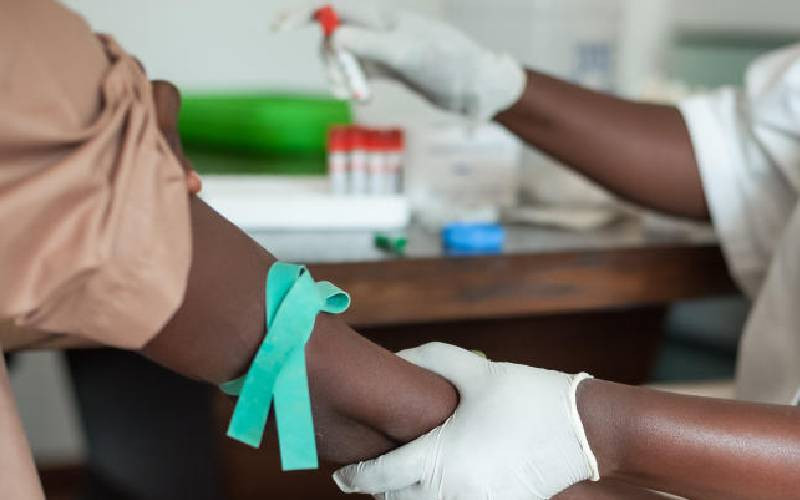A lean family, a skilled and spirited youthful generation and economic opportunities have been billed as a fitting formula for Kenya to change its population structure and set off a faster economic growth.
Kenya is among countries that have recorded a decrease in the average number of children from about eight births per woman in the mid 70s to an average of five in the late 90s. There was a further decline in the new millenium, to the current average of four children per woman.
Kinyanjui Kombani, a banker, entrepreneur and business mentor, is a father of four. At 34, he is optimistic that the gem in enabling Kenya meet the demographic dividend — a period of accelerated economic growth that begins when fertility rates fall, leading to a larger population of working-age adults and fewer young dependents — lies in investing in smaller families, anchoring skills development and providing economic opportunities for young adults.
“I would like my children to have a choice to achieve anything. When I was growing up, the only aim was to survive. We did not know where the next meal would come from, so my earlier decisions were about getting out of poverty by any means necessary,” he says. Kombani is optimistic that through focusing on the bulging youthful age-group, Kenya will reap the benefits of demographic dividend. According to the Population Reference Bureau, with fewer people to support, a country has a window of opportunity for rapid growth if the right social and economic policies are developed and investments made.
But this should be matched by robust economic and health policies and employment or entrepreneurship opportunities for the already growing youthful population.
Excerpts from the National Council for Population and Development (NCPD) policy brief No 49 dated June this year demonstrate that ensuring half the population attains secondary education could more than double the annual economic growth rate. South Korea, Malaysia, Hong Kong, Indonesia, Singapore, Taiwan and Thailand are referred to as the Asian Tigers for being springboards for economic growth emanating from a change in their population structure.
By fulfilling promises to the youth, George Kichamu, a population studies expert, says there is great potential in attaining the demographic dividend because young people will be the drivers of development in Kenya in the next two decades.
This faster economic growth is required to achieve the demographic dividend which is only possible when a country has a larger population of working age adults and fewer young dependents.
On investments in education, Kombani believes it is important for the youth to diversify their skills for the market today because it is rapidly changing.
“Unless the youth broaden their skills, they will become obsolete as evident in the dawn of social media and the far reaching technological advancements,” he said. “There is a lot of information on financial wellness and the youth are now more exposed to multiple channels ranging from social media to applications on smart phones,” said Kombani.
Globally competitive
He said investing in the youth will drive Kenya towards being a more globally competitive and prosperous nation. The young people can take advantage of this information to learn when and where to invest.
Mr Kichamu, who is a director of technical services at NCPD, said families with fewer children free household resources to long-term investments. And with the number of young people globally at peak-high than ever before, moderate population projections estimate that today there are about 1.8 billion people between ages 10 and 24. This is expected to increase until about 2070.
But attainment of the demographic dividend is not immediate as it is sustained by investments in education, health and reform of economic policies, Kichamu said.
“We need to enhance skills development in the youth by providing opportunities where they can participate in economic ventures,” he said.
According to the United Nations population Fund (UNFPA), to realise a demographic dividend, a country must undergo a demographic transition through a shift from high fertility and mortality to low fertility and mortality.
UNFPA executive director Babatunde Osotimehin advises that countries must do more to protect human rights (reproductive rights), improve health (sexual and reproductive) and provide skills and knowledge to build young people’s capabilities and agency. Kichamu further suggests that to address unemployment, a broad base of skilled workforce and matching skills supply and demand is urgently required.
“Through the mid-level colleges and technical institutions, we can bridge the gap and produce vibrant workers keen to contribute to the economy,” he said.
Kichamu’s sentiments are echoed by South Africa minister of Social Development Bathabile Dlamini, who says Africa is in the best position to reap the demographic dividend in the years to come given its youthful population.
Poverty elimination
“If the demographic dividend is fully tapped in Africa, we are confident that economic growth will increase. This will be sufficient to double per capita income and eliminate extreme poverty,” she said at a recent continental population meeting looking at the prospects of Africa attaining a demographic dividend in years to come.
Ethiopia is one of the countries pitted to be on the pathway to a demographic dividend having experienced an impressive decline in fertility, economic growth and poverty reduction in the last two decades.
Between 2000 and 2014, Ethiopia recorded a drop in the total fertility rate (TFR) from an estimated 5.9 children per woman to 4.1.
Life expectancy for both sexes improved from 51 years to 63 while access to education in the rural areas improved and unemployment rates declined. “With a demographic transition and accompanying investments in health, education, and job growth, Ethiopia may realise the economic boost that a demographic dividend can provide,” reads an excerpt of a policy brief by the Population Reference Bureau published in July this year.
Kinyanjui says beyond the skills development corridors, a lot of coaching and mentoring is required to guide and sustain the young minds in the economic ventures.
 The Standard Group Plc is a multi-media organization with investments in media platforms spanning newspaper print
operations, television, radio broadcasting, digital and online services. The Standard Group is recognized as a
leading multi-media house in Kenya with a key influence in matters of national and international interest.
The Standard Group Plc is a multi-media organization with investments in media platforms spanning newspaper print
operations, television, radio broadcasting, digital and online services. The Standard Group is recognized as a
leading multi-media house in Kenya with a key influence in matters of national and international interest.











